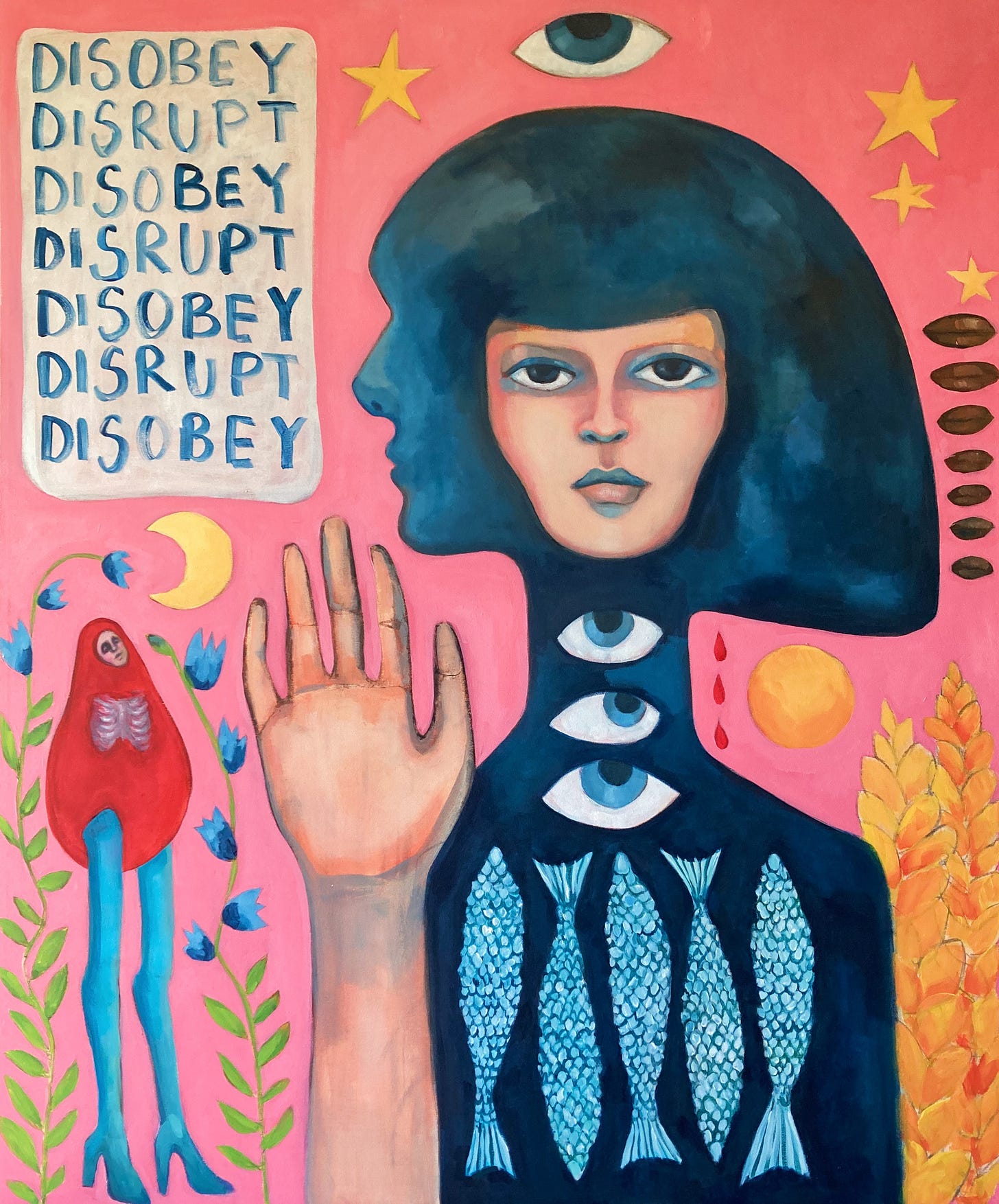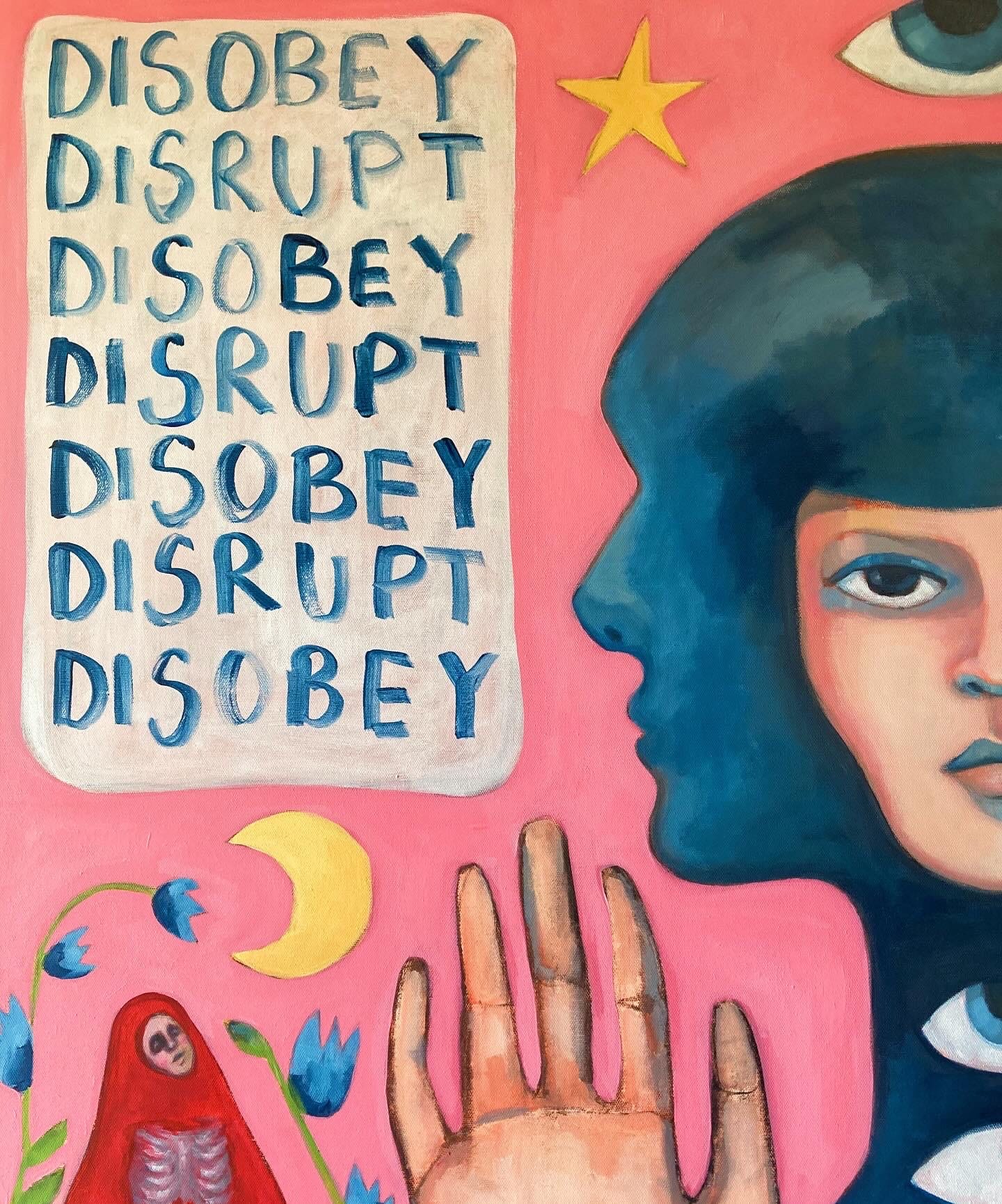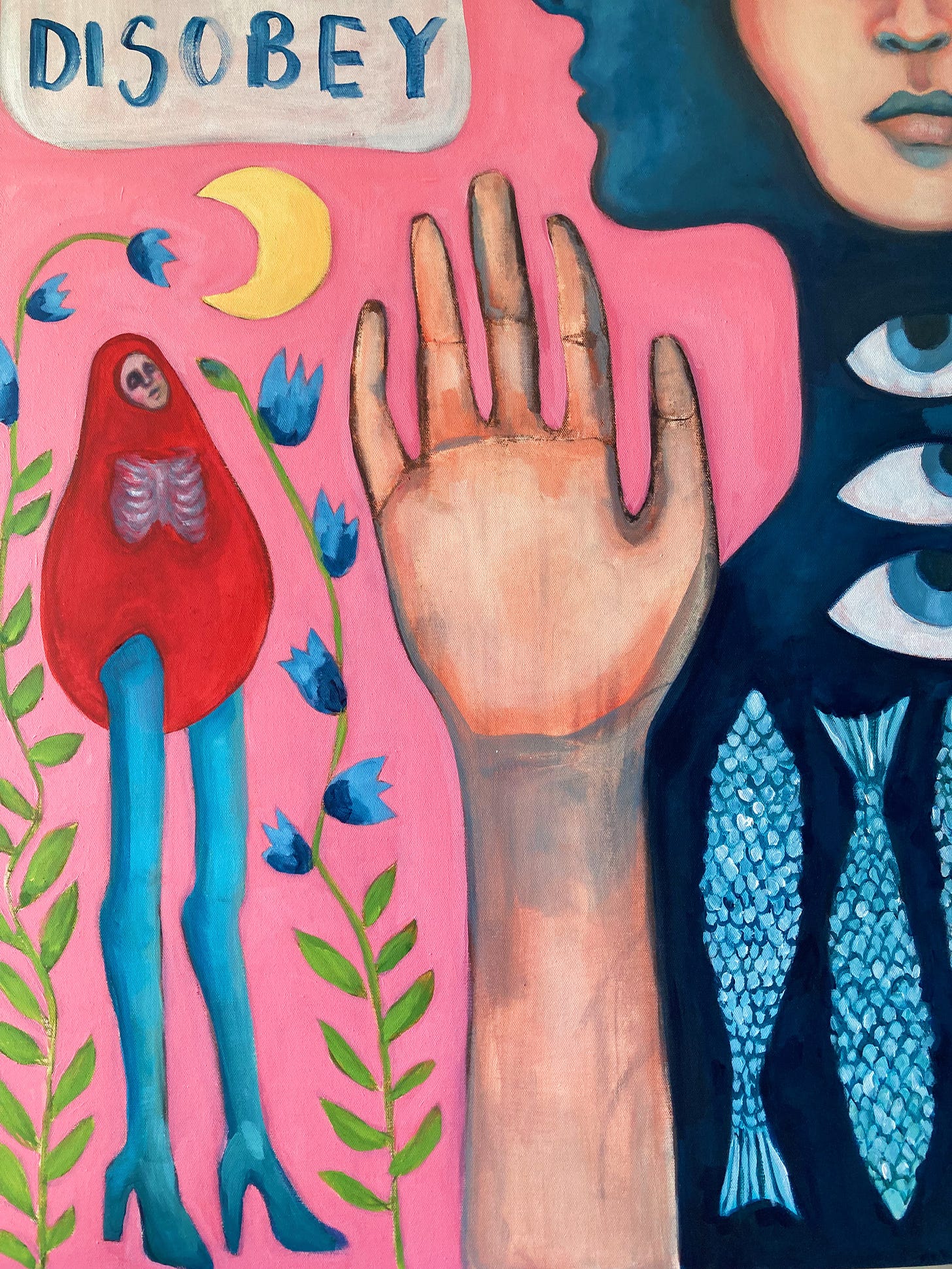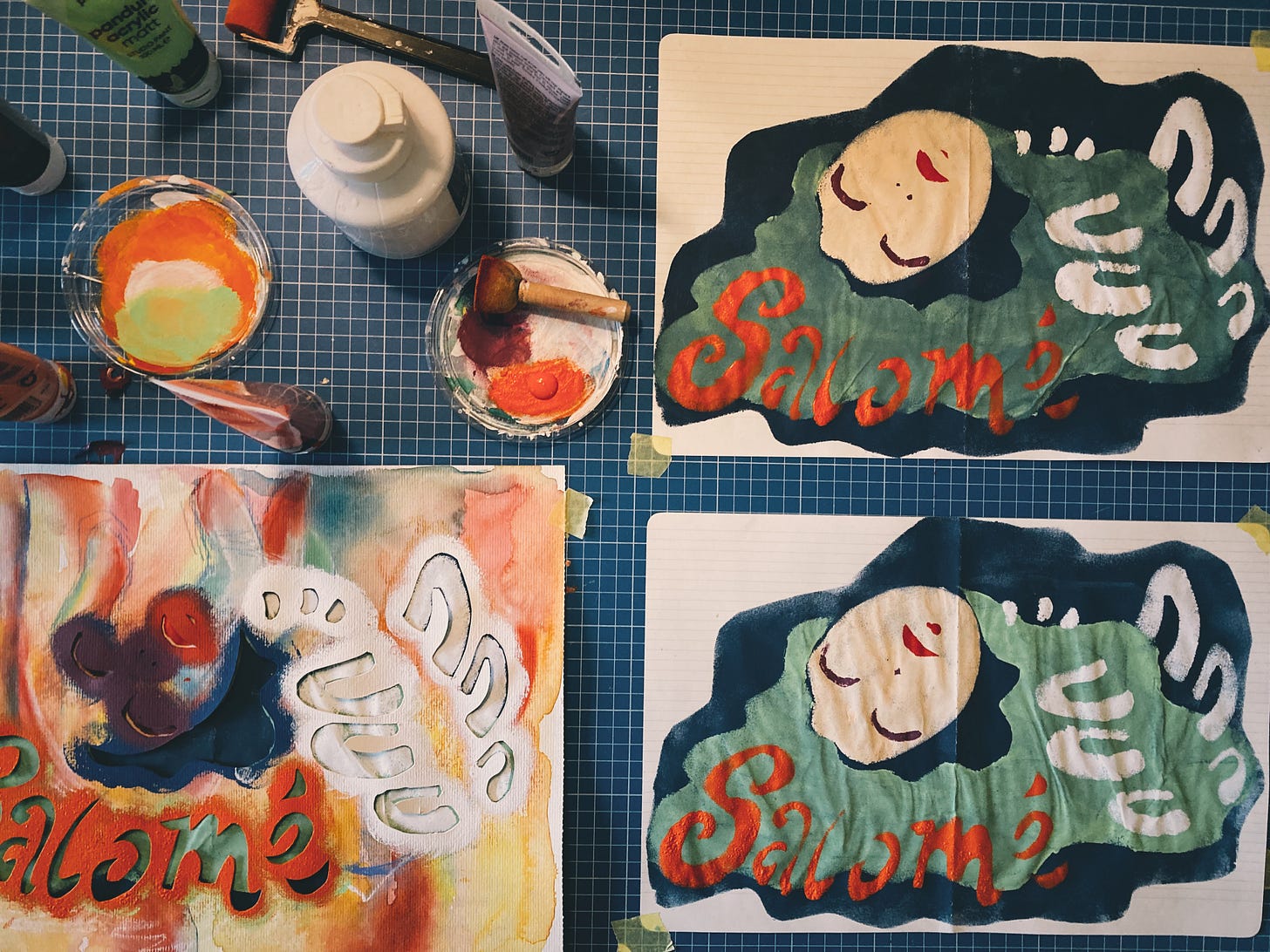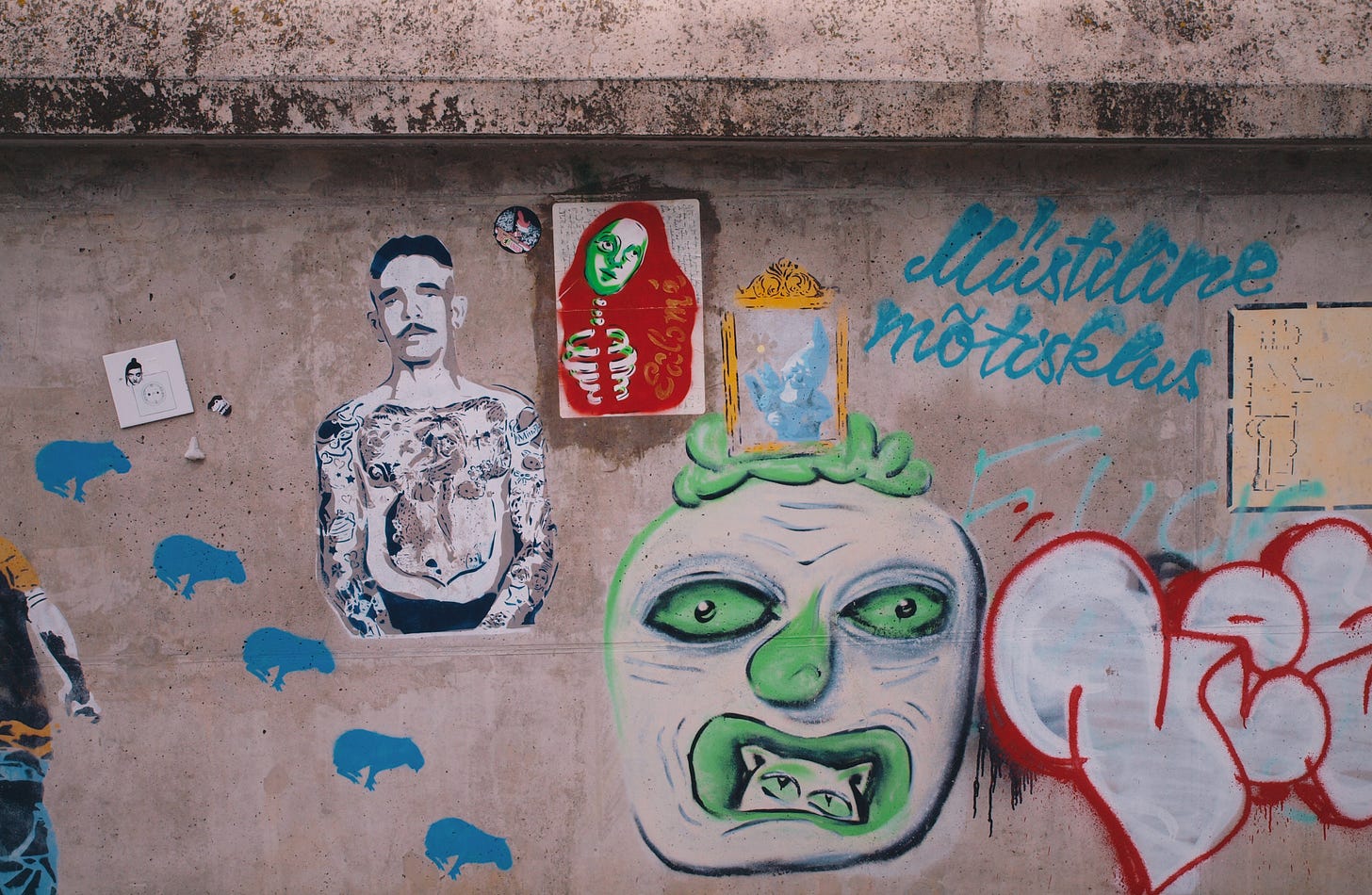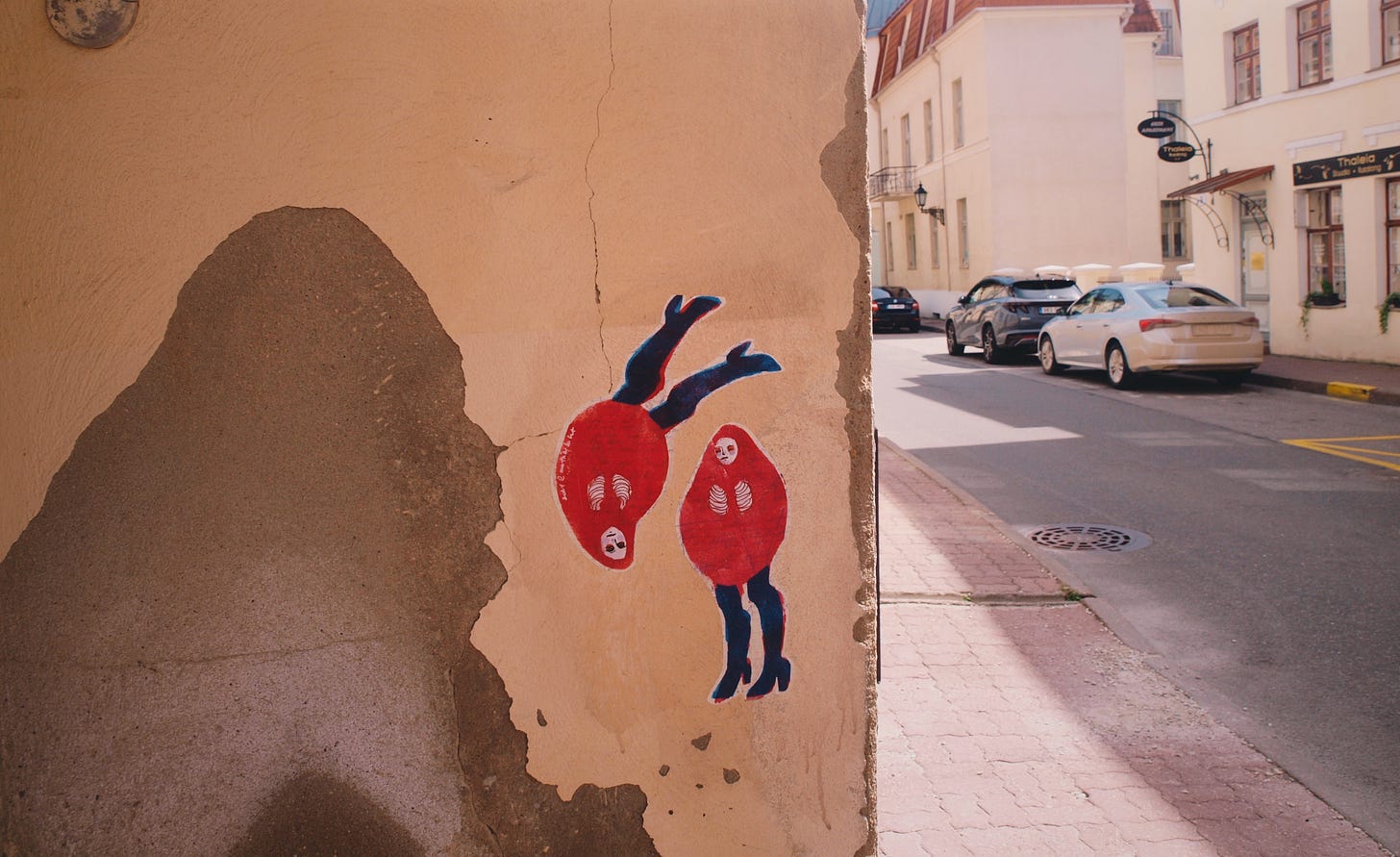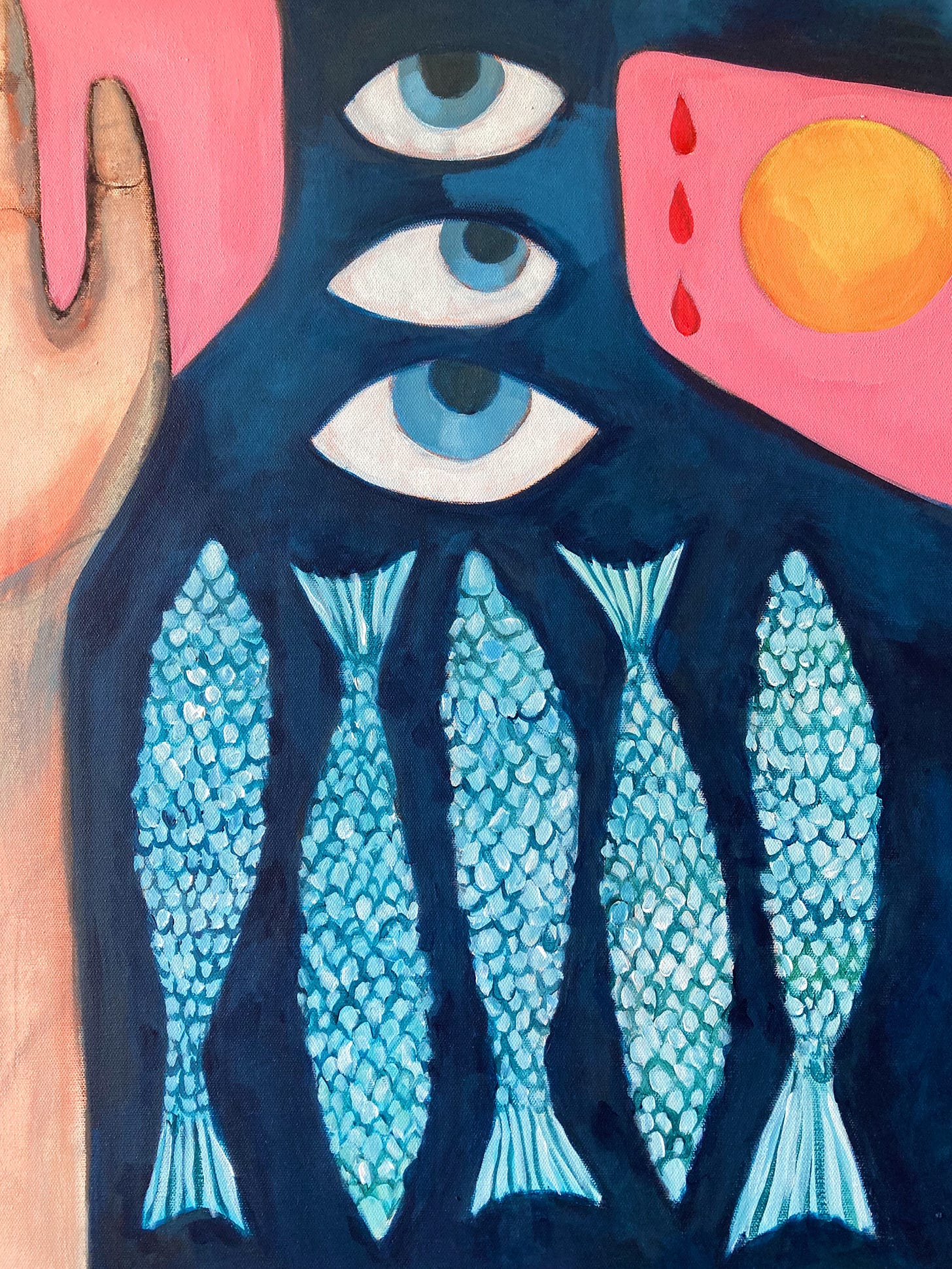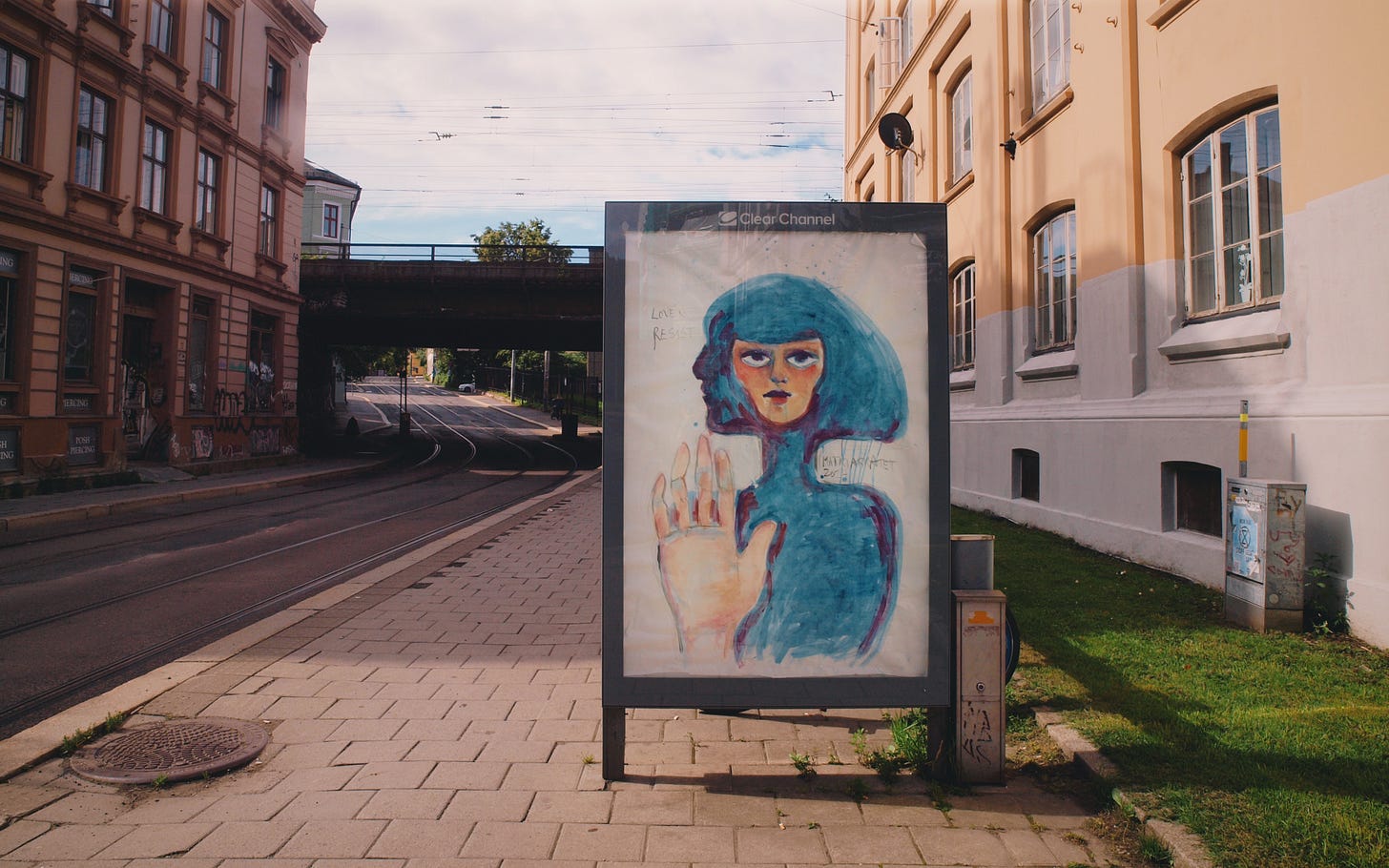Rita
This is Rita (2024). She is made with charcoal and acrylic paint on a canvas measuring 100 x 120 cm. I don’t really know exactly where to start writing about Rita. I wanted to paint my version of god. A female god, a god that a matriarchy would create. I don’t believe man is made in god’s image, I believe god is made in man’s image, and I began wondering how god could have looked like if I lived in a world without patriarchy. And I started to think about a piece of art that I probably spent the most time looking at growing up:
The quality of the photo isn’t great, but it was what I could find online, it’s from the church I grew up with. It didn’t have the traditional painted altarpiece, but this incredibly beautiful tapestry “De Tre Årstider (jul/påske/pinse)” made by Else Marie Jakobsen in 1984. To the left is Mary with baby Jesus, the center depicts the last supper, and to the right, pentecost, when his disciples receives the Holy Spirit. It’s 3.8 x 8 meters, and I wish I had a better photo of it, because this work of art has had such an impact on me. I can remember sitting for so many services just looking at it, while I imagined how it would feel like to touch it, wondering how heavy it was, and what it was like for the artist to make something like this, admiring the colors, noticing the symbols, making these biblical characters and the divine seem so near, and human to me. In the middle section, Jesus is sitting at the head of the table, his hand is raised. I wonder how many times I’ve seen a priest doing this gesture: the blessing.
I’ve had an image of a god-woman in my mind for some time now. She is seen from multiple perspectives, and with many layers. I’m still trying to figure out how to translate that into a two-dimensional painting, because when I see her in my mind, it’s like I’m opening my eyes on the other side, looking inward, and she is inside of me, and I’m looking into me/her at the same time as I am looking at her. She first emerged as the sketch you see above, that I turned into stickers, as seen below. I added the eye, as you may or may not have noticed also in the tapestry, symbolizing god and the Holy Spirit in the upper left corner, and the blessing gesture.

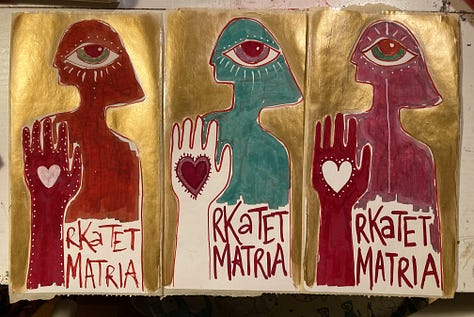
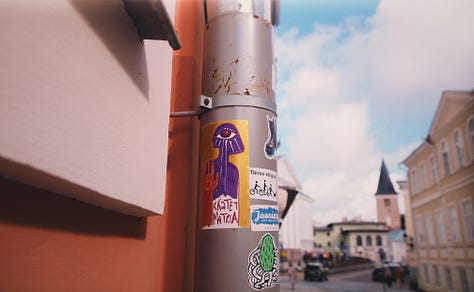
The more I worked with the shape and the stickers, I felt like I had to paint her big, so I got the biggest canvas I am able to carry, and started to work on her. While I was working on sketching the canvas, the student’s protests in the US had started, as well as the police brutality against them. And when the president said that “dissent must never lead to disorder”, I just got so mad that I had to make my opinion on this clear, and I made some posters that I installed on the street:
And I tried to fight it, but I just had to write this on the canvas as well, because my god wouldn’t ask for obedience. My god would want me to think for myself.
I struggled with this because I don’t want to write stuff in my paintings, and I’ve had several big fights with myself about it. I have this idea that a painting shouldn’t need words, because the image in itself should say everything, and I think I’m a poor painter if I have to use words. But on the other hand I am also working with the terms ‘disobey’ and ‘disrupt’, so you know, fuck it. If I want to have text in my painting, then that’s happening. If I can’t do as I want with my paintings, then what’s the point of making art in the first place?
The long-legged woman with no arms and ribs on display, is a recurring character for me, that emerged in my very first paste-ups, together with the name Salomé.
Salomé is named after a story in the bible. According to the Gospel of Mark, Salomé’s mother Herodias bore a grudge against John the Baptist for stating that her marriage to king Herod was unlawful. Herodias's daughter, Salomé, had danced before Herod at his birthday celebration, and he loved her performance so much that she was told she could ask for anything in return for it. After consulting with her mother, Salomé asked Herod for the head of John the Baptist on a plate.
Salomé is a character that many (male) artists have worked with, and she has often been portrayed as a femme fatale, and an “icon of dangerous female seductiveness, notably in regard to the dance mentioned in the New Testament, which is thought to have had an erotic element to it, and in some later transformations it has further been iconized as the Dance of the Seven Veils”, who wanted to punish John the Baptist for not giving her the attention that she supposedly craved. Which was not the case. Growing up in the church, I was taught that it was Salomé’s fault that John - who was considered the most important of all the disciples because he made baptizing a thing - was killed. She was a cautionary tale to young girls and women in particular, used to teach us about the inherently (according to them) manipulative ways of a women, and attach shame to any and all female expressions of eroticism, desire, seduction and confidence in our bodies.
I chose the name Salomé as a protest against the patriarchal view of the woman as someone who is dangerous and needs to be controlled. Because why would the patriarchy spend so much time and effort keeping women in “their place”, if it didn’t feel threatened by our power?
I always paint Salomé and her sisters with their ribs exposed. They are stripped bare and starved, so they have created this protective layer that they have to stay inside. Sometimes with legs, sometimes without, it depends on what they’re up to, and what part of the story they appear. The more limbs, the more free and confident they feel I guess. Like the two below, I really like them, because they’re a little rude and always up to something. They’re done with just staying still and playing by the rules, and wants to stirr up some shit. I think a lot of women can relate, especially those of us (and let’s face it: most of us are) suffering from the good girl syndrome. I write this in present tense, because even though I am aware of how much I disagree with the cultural expectations of how I am supposed to behave as a woman, I am still fighting the consequences this conditioning has on me. And I still have to navigate a society that is largely stuck at expecting of women and girls to center their existence around managing the emotions of men. I have to watch my attitude, my tone, and my confidence, because some men will respond violently if I don’t. This is something that I have to monitor every time I meet a man I don’t previously know, and probably why I keep to myself for the most part. The more independent I am, the less I have to worry about someone destroying everything I am. But the more confident I become, the closer I am willing to let people get, so maybe I don’t have to stay so aloof for ever. Time will tell.
I don’t know the name of a work before I start painting it. It always starts with an image in my mind that I have to get out of me and onto something else. And then when I get to a certain point, near the end, I name them. I always look up the meaning of the names after, and more often then not, it makes we wonder about collective knowledge, and wether or not I’m tapping into it, because the names are sometimes just too perfect for it to be a coincidence. Like the name Rita. In Norwegian, the name Rita is considered a little trashy, no offense to anyone named that, but it’s not a name that I would normally choose. But this woman, this female god that I was painting, told me that her name was Rita, and so I looked it up. Turns out, Rita is sanskrit for 'truth' or 'order', and is a central concept in Vedic philosophy, used to explain the principle that governs the order of the universe. Rita is responsible for the proper functioning of natural, moral, religious and sacrificial order, and is the founding principle for dharma (duty) and karma (action). I thought that was quite fitting.
In the painting, I am using some of the symbols from the tapestry, like the fish, the wheat grain, the eye, the drops of blood. Even if I haven’t seen the tapestry in many years, I can remember them all so clearly. I was aware that it was made by a woman when I was a kid, and I really liked that. The moon and the sun are from one of my favorite psalms growing up (also written by a woman), Måne og Sol (Moon and Sun), and the stars are from a song by Lillebjørn Nilsen that I absolutely love, Barn av Regnbuen (Children of the Rainbow). Both these songs represents for me these huge feelings of love, gratitude and compassion for everything on this planet. I love this world and all life so much, I have to put a lid on it most of the time, or I would just walk around looking like a crazy person in constant awe and amazement of everything in existence. I think people sometimes read me as being a little cold or hard to excite, but I’m really not at all, I’ve just been taught to keep it down. But those two songs bypasses everything, and I will start crying just thinking about them.
I wanted Rita to be big when I painted her. I wanted her to have a commanding presence, calm, and calming, but I also wanted to feel like she left me no choice but to look at her. And now I just want to paint her bigger and bigger and bigger. I guess this is an occupational risk when part of my job is to produce murals. I am far from being able to paint my women the size I think they should be yet, but I was very happy to put up the poster below the other day in my neighborhood. It’s a version of Rita, painted very quickly on a thin paper table-cloth. It’s stayed up for a couple of days now, and I get so excited when I walk home after being out, because I can see her from a distance, many times the size of everyone walking by.
I just want to fill this city with images from my matriarchy. If you have something you really want to get out on the streets as well, let me know, I can help.



